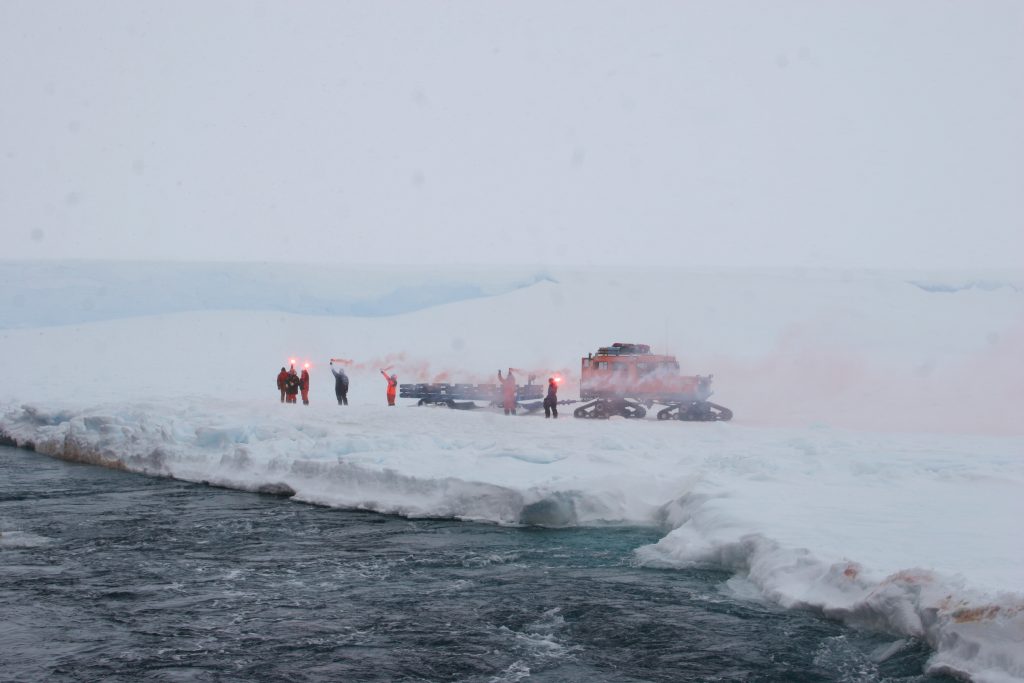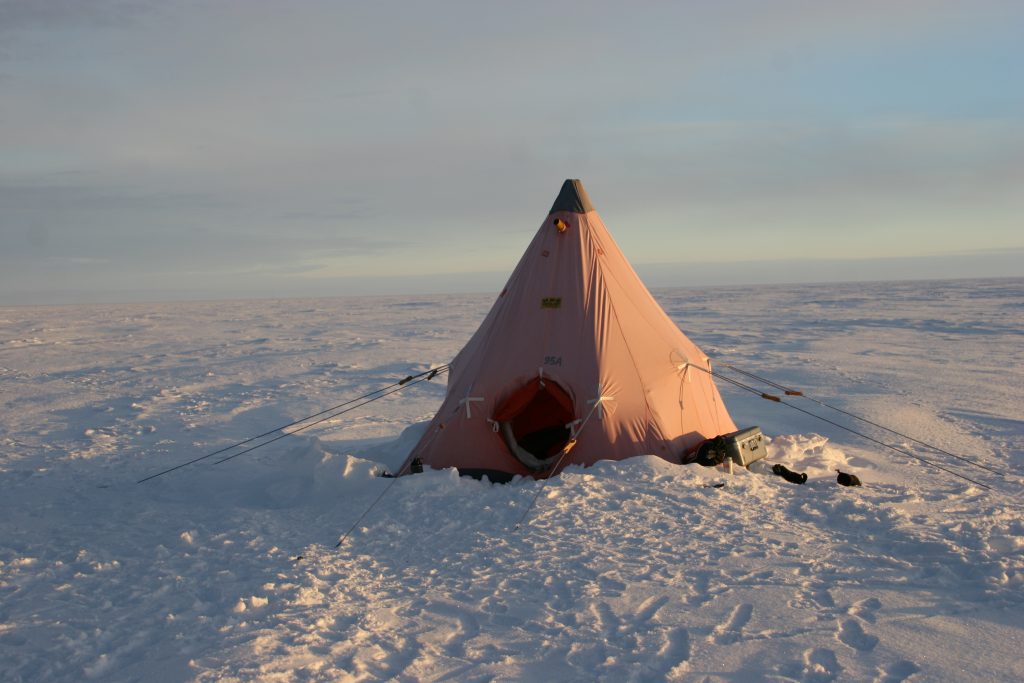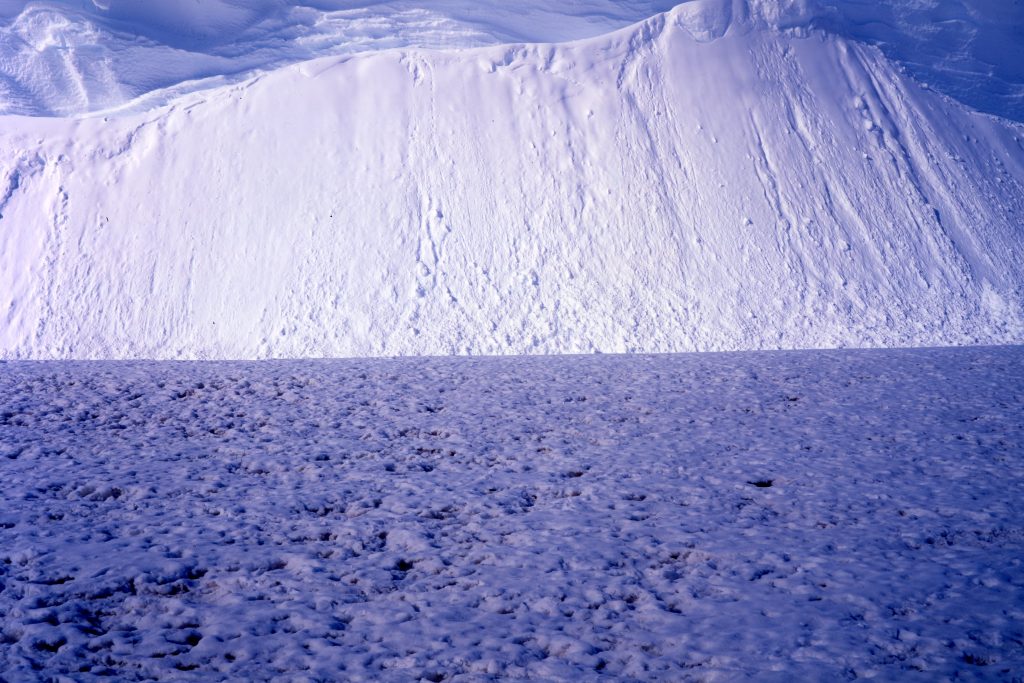‘There are no voices from this frozen continent. There are no people to speak for here, to break the silence. But the stillness above does not tell of the turmoil below. Who speaks for this place? Who will hear, who will listen, as ice tears itself apart?’
In 2008/09 I spent four months travelling in Antarctica as artist-in-residence with the British Antarctic Survey. Halley is the most southern British base accessible by ship through the Weddell Sea. It is the base which first detected the hole in the Ozone Layer and it continues to measure atmosphere, weather patterns and the shifting ice flows.
What that does not tell you is the amazing impact Antarctica has, or at least had, on me. It sounds like a cliché but I found the experience to be deeply profound and almost impossible to respond to creatively. Everything I tried seemed crass, lightweight in comparison to the vastness of a continent. A continent entirely without an indigenous community, just some temporary residents, mostly scientists trying to grapple with its complexities.
Unpopulated, this frozen, fragile continent is one of the fundamental building blocks of life on earth. It is meeting the importance of that directly and understanding the smallness of human life by comparison, that left such an impression. Yet it remains so vulnerable to human activity in other parts of the world.
Within a year of my return I had also spent time in Southern Greenland where there is an indigenous community. What stares you in the face immediately is just how quickly our landscapes are failing. Ice no longer freezes in the fjords, glaciers are rapidly retreating and a population which sustained itself for thousands of years can no longer survive without imports of food.

This work (text and photographs) is licensed under a Creative Commons Attribution-NonCommercial-ShareAlike 4.0 International License.
Learn more
- The British Antarctic Survey: Polar science for planet Earth
- The Halley Station webcam
- More about Neville’s Antarctic residency






